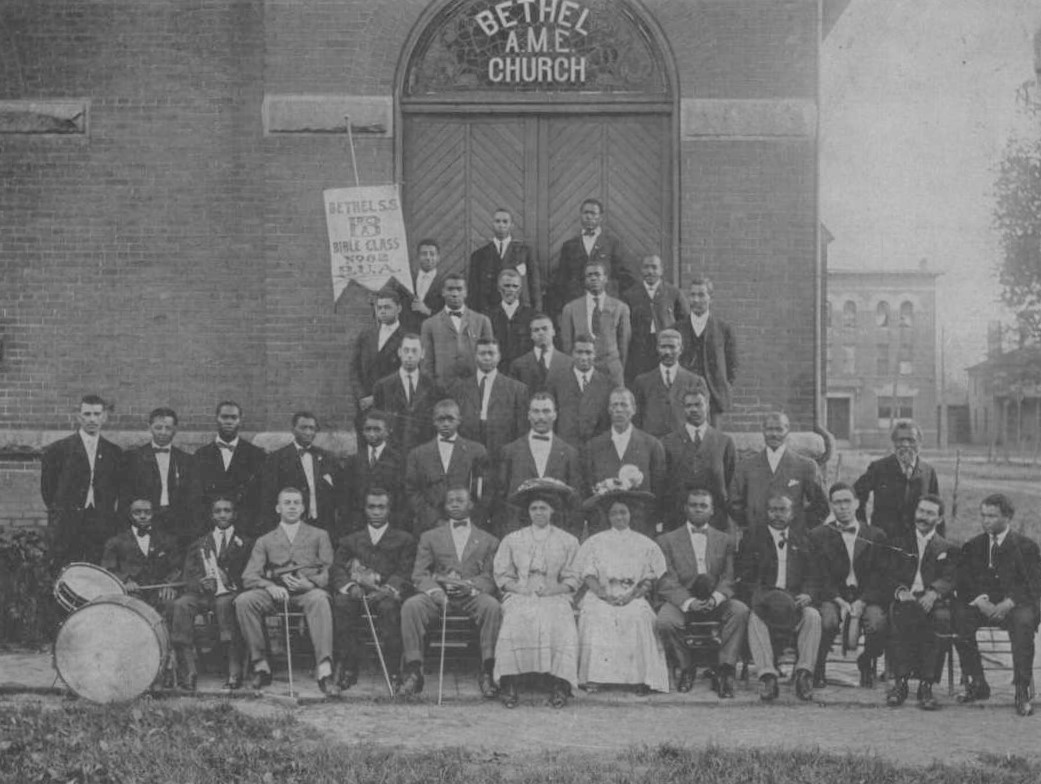Bethel African Methodist Episcopal Church
401 E. Park Street, Champaign, IL
Located at 401 E. Park Street in Champaign, Bethel A.M.E. Church is the oldest African American led church in Champaign County. It was organized in 1863 and predates the establishment of the University of Illinois. During the early part of the century when segregation was a fact of life, Bethel established a library and had a church orchestra. The church served as a meeting place for Black students attending the University of Illinois, establishing monthly lyceum meetings where students and members of the congregation came together for lectures, discussions, debates, and musical performances. In 1915 it was the site of the founding of the Twin Cities Chapter of the National Association for the Advancement of Colored People (NAACP). Spiritual, community and educational development have continued to be a mission for the church.
Bethel A. M. E. Church was organized in 1863, the first Black congregation established in Champaign County, predating the establishment of the University of Illinois by four years. It is a part of the first African American denomination organized in the United States, dating back to 1787.
The original church began when a small group of people, who had been holding prayer meetings in their homes, raised funds in the amount of $600.00 to erect a small frame building on the property of Mr. Jake Taylor at 405 E. Park in Champaign. In 1892 a new brick, expanded church building was completed at 401 E. Park and dedicated in January 1893.
Bethel Church was the site of many important events over the years. In 1895 it was the site of a meeting to plan a permanent organization to celebrate Emancipation Day each September. Black citizens from throughout East Central Illinois gathered for a parade and picnic each year to commemorate the event.
In 1910 the church established the National Baraca-Philathea Bible Study Group, the only congregation in the Champaign-Urbana area to do so. Bethel became a “home away from home” for many Black students enrolled at the university, providing a place to study, discuss and debate ideas, and fellowship with others.
In April of 1915, Bethel was the site of the founding of the Twin Cities Chapter of the National Association for the Advancement of Colored People (NAACP). In 1961, over 100 African Americans met at Bethel to organize protests against unfair unemployment practices in downtown Champaign.
The “new” Bethel was designed by Laz-Edwards Architects of Champaign and constructed under the pastorate of Rev. C. M. Curry. It was dedicated on April 26, 1959. This structure underwent renovation in 2016.
Over the years, the church has established itself as a center for spiritual development, cultural, educational, and social justice activities for the African American community in the quest for racial and social uplift and self-determination.
On April 28, 2023, Co-Chairs of the Champaign County African American Heritage Trail and lifelong members of the Bethel A.M.E. Church, Barbara Suggs Mason and Angela Rivers, presented a history of the church in honor of its 160th anniversary.
This trail stop is sponsored by: The Family of Eugene and Hesst Suggs and dedicated to the members of Bethel A.M.E. Church
Decade:
1860-1869
Location(s):
- Champaign, Illinois
Additional Champaign Trail Sites

